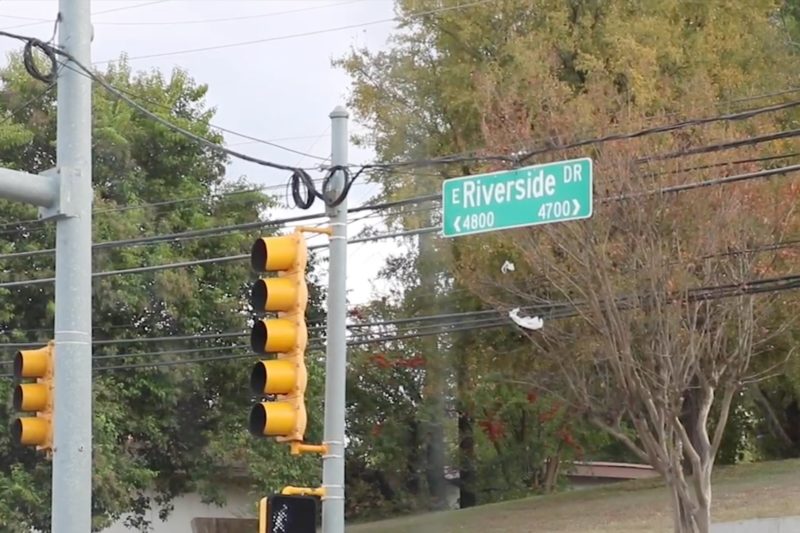Expanding Floodplain Raises Concern of Students in Riverside
By Brooke Sjoberg
Reporting Texas
 Thousands of college students commuting every day between Riverside and their Austin campuses, including The University of Texas, say flooding around their homes can sometimes be hazardous.
Thousands of college students commuting every day between Riverside and their Austin campuses, including The University of Texas, say flooding around their homes can sometimes be hazardous.
Due to lower rents, Riverside is a popular but transient place with UT and other students moving in and out.
Jackie Peña, a recent UT grad, spent three years living in Riverside.
“Over the three years I was there, on more than one occasion, the busses would get filled with water when students would get on and off the bus,” Peña said. “Most of the bus stops have covered awnings so that helped, but the busses would pick up the water off the side of the curb when students would load up.”
The uneven elevation of the area, with high hills and low dips, has several creeks running through it feeding to and from Lady Bird Lake.
The National Weather Service has been conducting a rainfall survey, Atlas 14, which indicates that Central Texas may experience more large storms and weather events than previously predicted. What was once called the 500-year floodplain has now been dubbed the 100-year floodplain by the city of Austin.
The survey indicates the likelihood that some residential areas may experience flooding has nearly doubled. Two of these areas are largely occupied by students: the Waller Creek corridor and East Riverside.
The University Environmental Health and Safety team said the National Weather Service has certified the University of Texas at Austin as a StormReady University. But the majority of students do not live on campus.
“As such, we have a 24-hour warning point, a system that monitors weather conditions locally, and we promote the importance of public readiness for all forms of inclement weather, including flooding,” UT spokeswoman Veronica Trevino said.
“The university’s Office of Emergency Preparedness works with its communication partners throughout the year,” Trevino added, “but particularly during the fall and spring months when flooding is more likely, to promote weather awareness.”
In response to concerns raised by the Atlas 14 update, EHS said the university is working with the city to manage increased runoff and flooding on campus as it pertains to university property and construction, but not in Riverside.
Peña worked in the offices of Ballpark East, now known as Quad West. She said some apartment complexes are better positioned than others. She lived in Town Lake Apartments, where she said she had little problems with flooding. However, at the complex where she worked at, the flooding was a real issue.
“Giving tours of the property were nearly impossible when it rained because the sidewalks would get flooded,” Peña said. “Water would come inside of our front office. There is a bridge that connects the two properties that has a lot of pedestrian foot traffic that, in my opinion, is a safety hazard when it rains because it gets slippery and the surrounding areas get flooded.”
Astronomy junior Princess Owotade said she has had her property damaged as a result of trying to get to class from Riverside during a flood event.
“I had my backpack and I was ready to go, and it was pouring rain and water was like to my ankle,” Owotade said. “My computer got ruined, my iPad got ruined, my books and stuff got ruined on my way to the bus and then my shoes got ruined so I couldn’t go to class.”
Peña said student concern about rising flood waters in the Riverside area is all about their commute to class.
“If higher flood water is predicted, I would say there is some cause for concern,” Peña said. “A lot of students in this area rely on public transportation or walk to surrounding areas, and increased flood water would just be another obstacle for them.”
Social Media by Jennifer Gonzalez